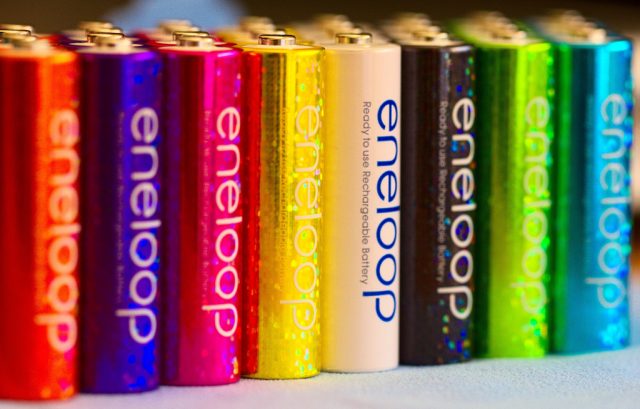
With battery technology being critical for so many things, interest in building better batteries just keeps on growing. The recent Tesla Model S testing debacle, explosive laptop batteries, and Boeing battery problems give us hints at how close to the edge engineers operate batteries. Volume, weight, and energy are key. Minimize the first two and maximize the last to obtain energy storage nirvana.
Lithium-ion batteries rule the roost at the moment, but as capacities are already on the order of 200Wh/kg, we're pushing up against their limits—basic chemical reactions provide a fixed amount of energy. The search for alternatives is being pursued by a rapidly growing field of eyebrow-less engineers (just kidding; battery mishaps don't happen that often). A recent publication on a sodium-air battery shows promise, but it also demonstrates what a huge amount of work still needs to be done.
The key to a battery is a simple chemical reaction that, at its heart, is the exchange of an electron. During the exchange, a certain amount of energy is released, usually in the form of heat. That's why, when you drop some sodium metal in water, the energy released is enough to cause explosions. The role of the battery is to intercept that electron and release its energy in the form of useful work.
When you look at a table of the energy released by chemical reactions and compare that to material densities, it's pretty easy to figure out that, for maximum bang, you want to oxidize something. Preferably something like a highly reactive metal—maybe lithium, sodium, or magnesium. These elements are light, so the batteries will not weigh too much; even better, the oxygen is in the air so the battery doesn't need to contain an oxidizing agent. As a result, the theoretical energy densities are much higher than that of lithium-ion. Sodium-air batteries could reach as high as 1600Wh/kg, while lithium-air clocks in at 3460Wh/kg.
In a publication in Nature Materials, a group of researchers who have a history of working with lithium-air batteries have turned their attention to sodium-air. The reason for the change is that lithium-air has some unfortunate chemistry that has proven difficult to overcome. The researchers wanted a simpler system that might not have as many technical hurdles. It turns out that sodium-air provides this system.
The battery they constructed is very simple. There's a solid sodium electrode at one end. On top of that an electrolyte is placed, then an air-permeable carbon electrode. The metal atoms release an electron that travels through a circuit to do work while the ionic form of the metal dissolves into the electrolyte and travels to the carbon electrode. At that electrode it combines with oxygen and an electron to form sodium oxide.
It's important to remember that this is very much exploratory, so the news is quite mixed. It certainly can't compare with a commercial lithium-ion battery, but it compares very well with lithium-air. The researchers found that it was easier to charge, held more charge, and had better discharge characteristics. In other words, even though lithium-air has a higher theoretical energy density, sodium-air has a higher practical energy density. Further, that energy is stored in the battery more efficiently and can be extracted more efficiently. As far as that goes, the news is unreservedly good.
With electrodes that are optimized and have large surface areas—as well as a catalyst to help the reactions along—this could be one very efficient and powerful battery. That's the conclusion we are supposed to be left with.
Now for the bad news: you can recharge the battery less than eight times before it is useless. That sounds bad enough, but there's even worse news. As far as I can tell from the paper, no one has a clue why this is the case. The most obvious candidate is that the electrolyte breaks down. But this is also one of the problems with the lithium-air cells—one that was presented as a great and possibly fatal barrier for that tech in this paper. Given that, I wonder just how easy it will be to solve that particular problem.
In the end, though, this is a nice first attempt, and I think some mild optimism is warranted.
Nature Materials, 2013, DOI: 10.1038/nmat3486
reader comments
52